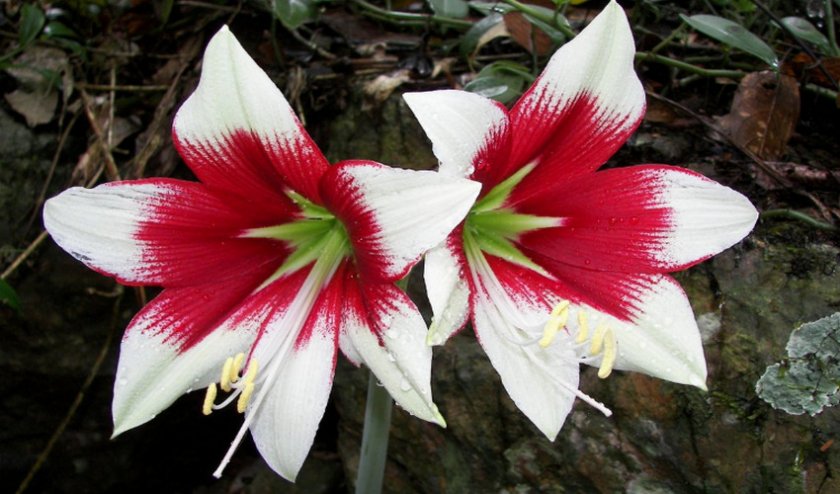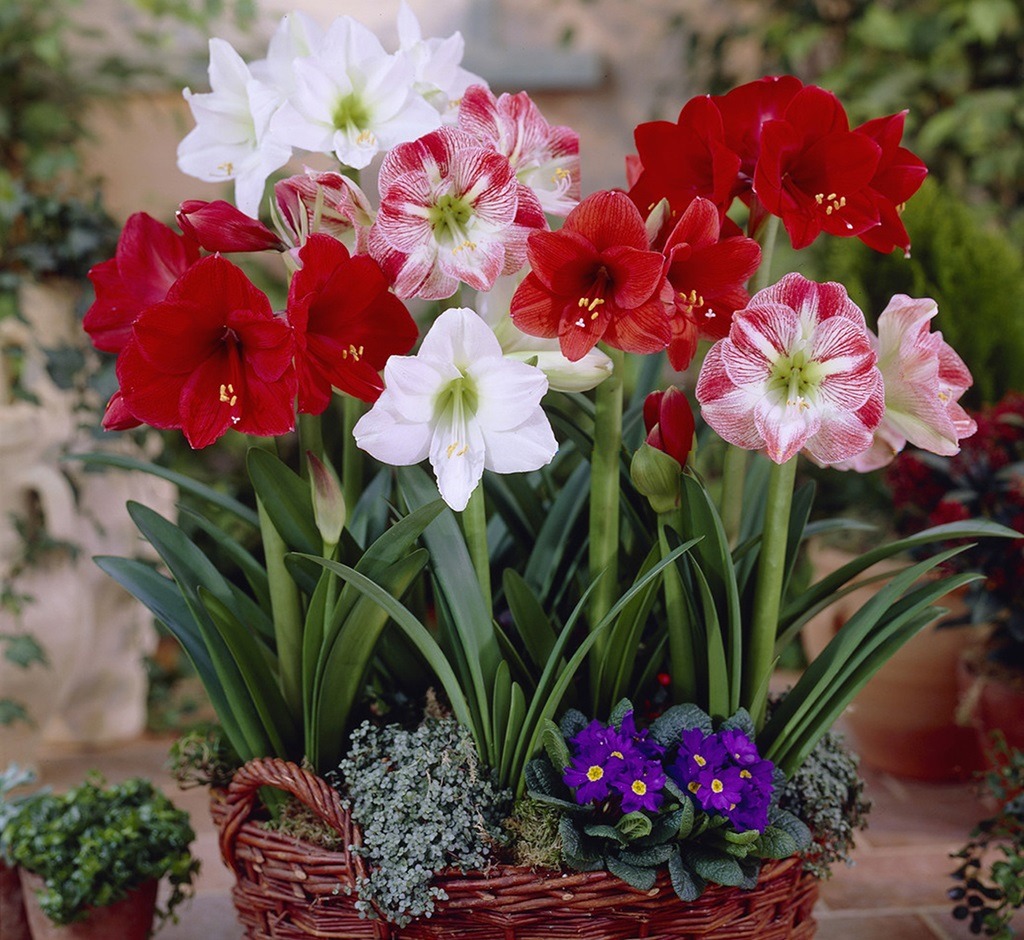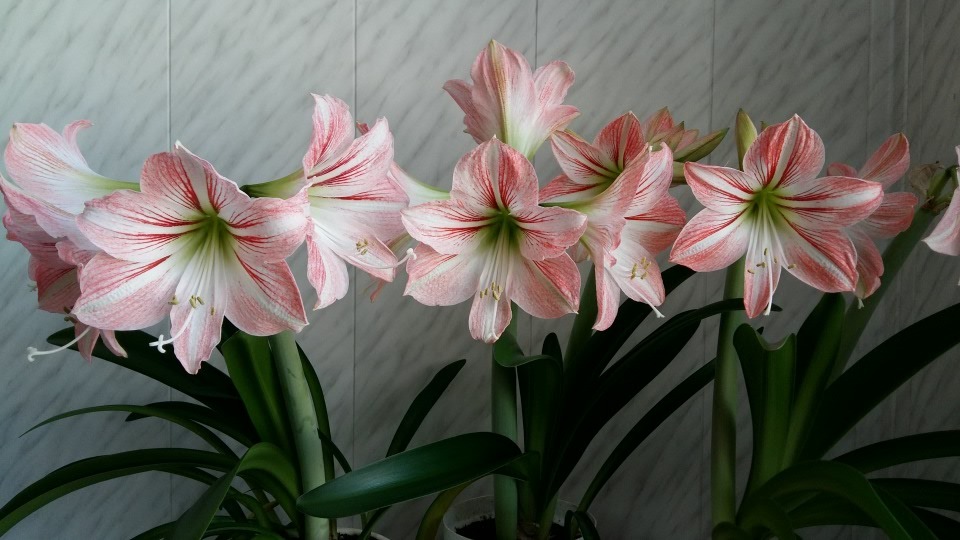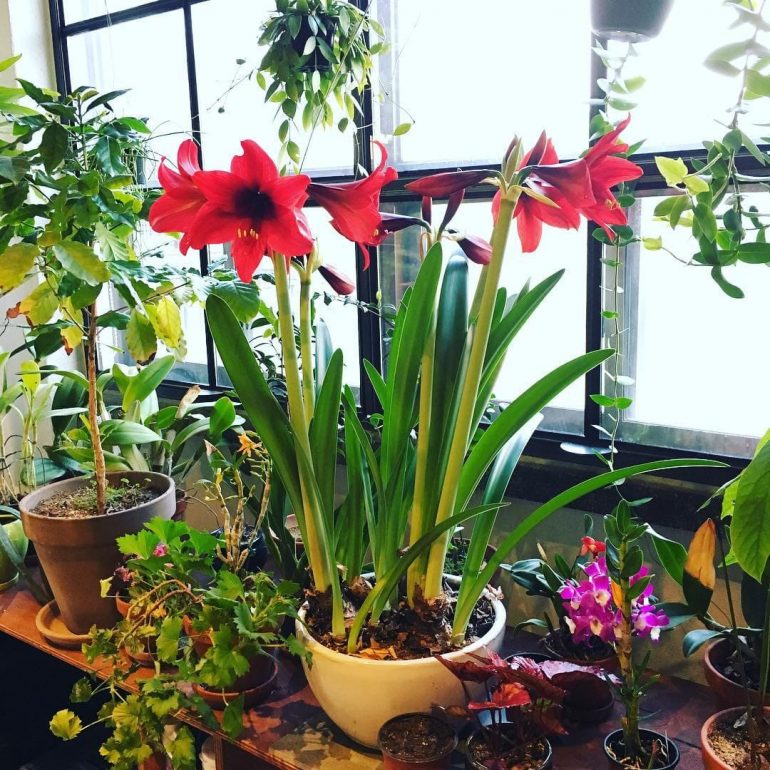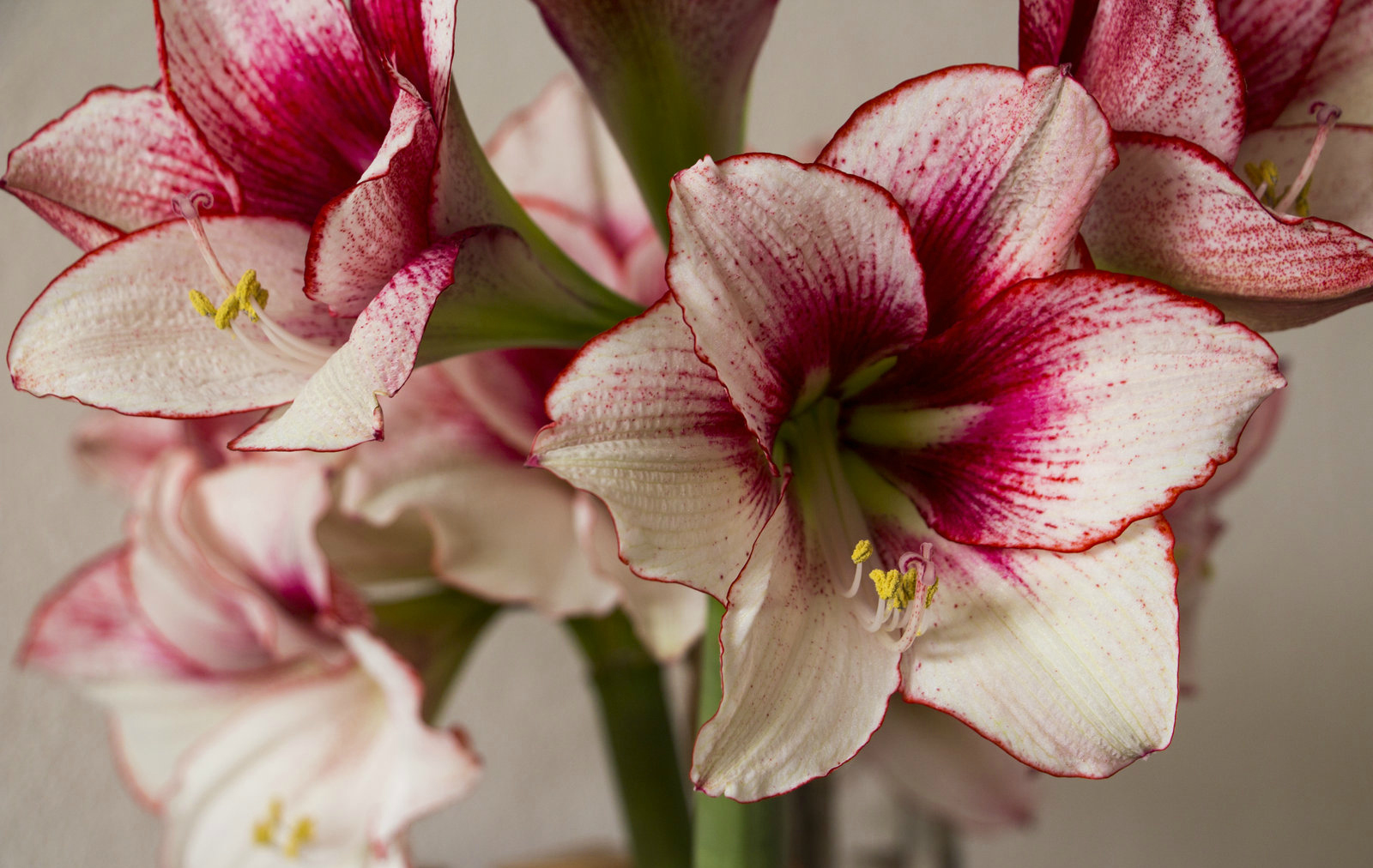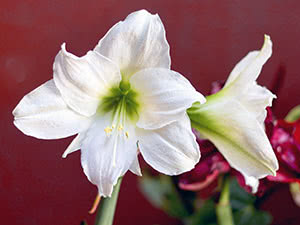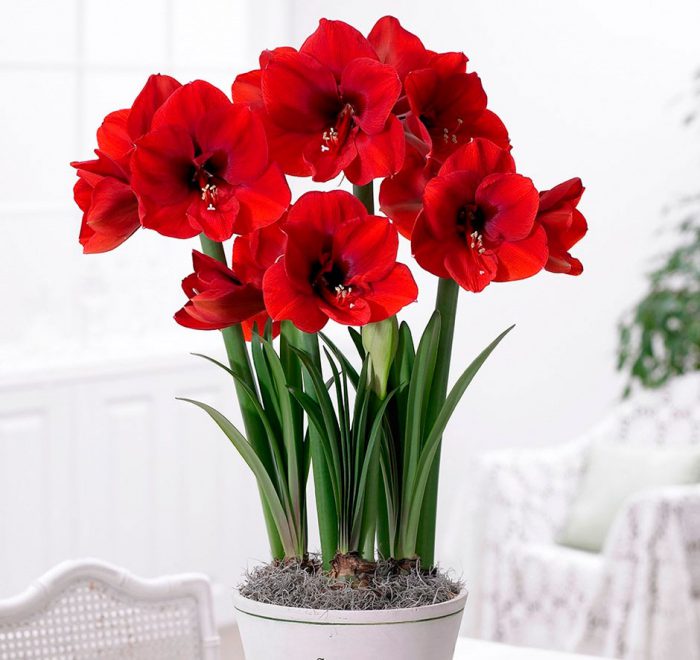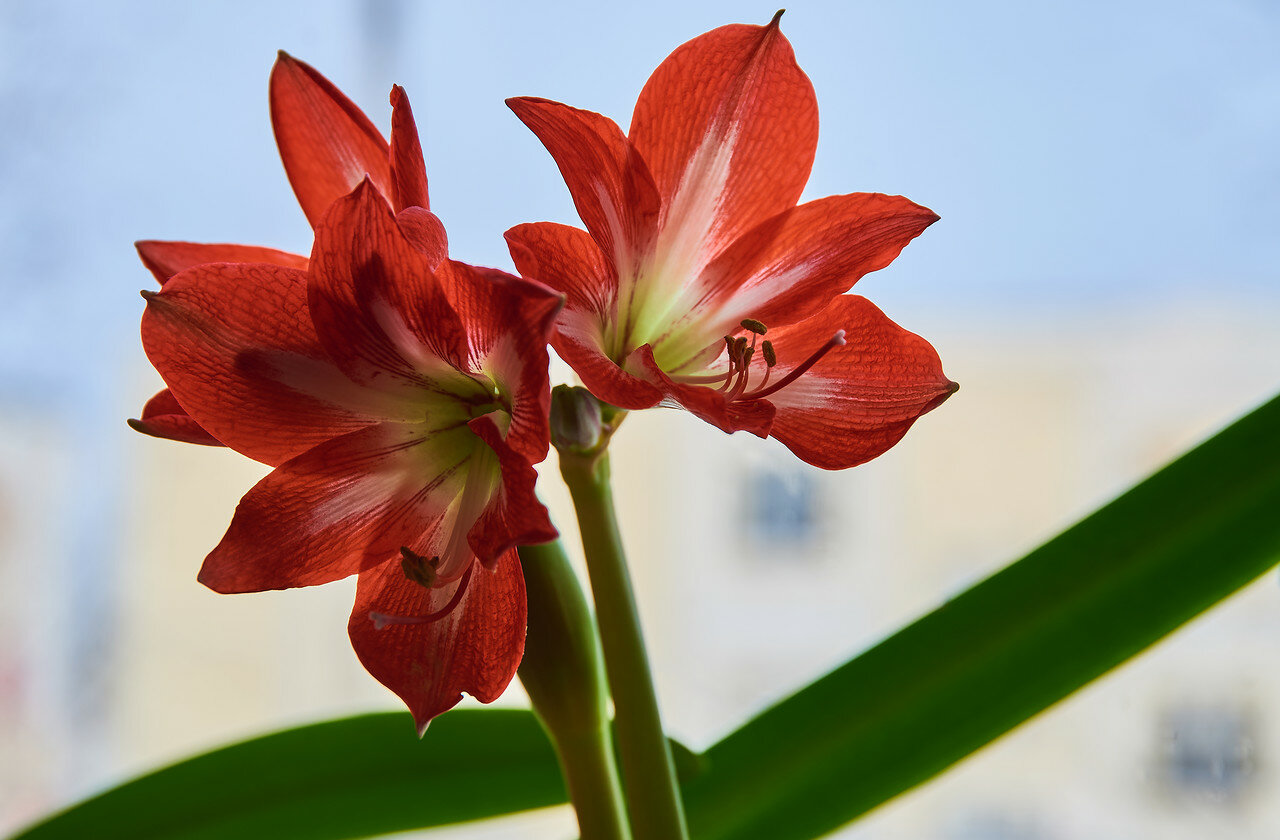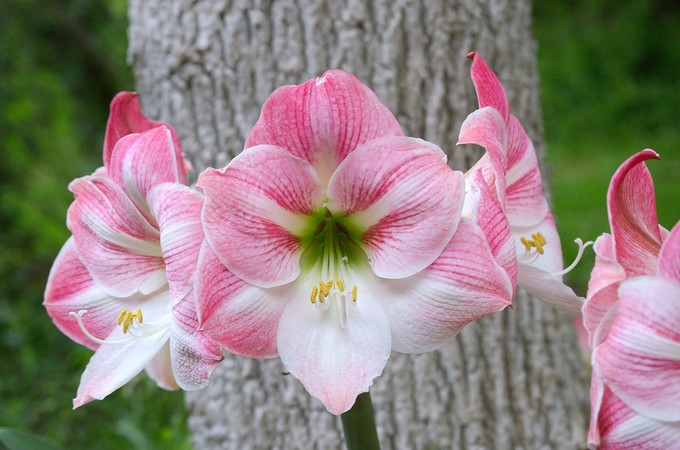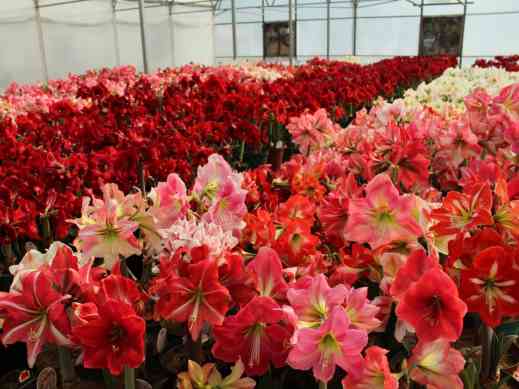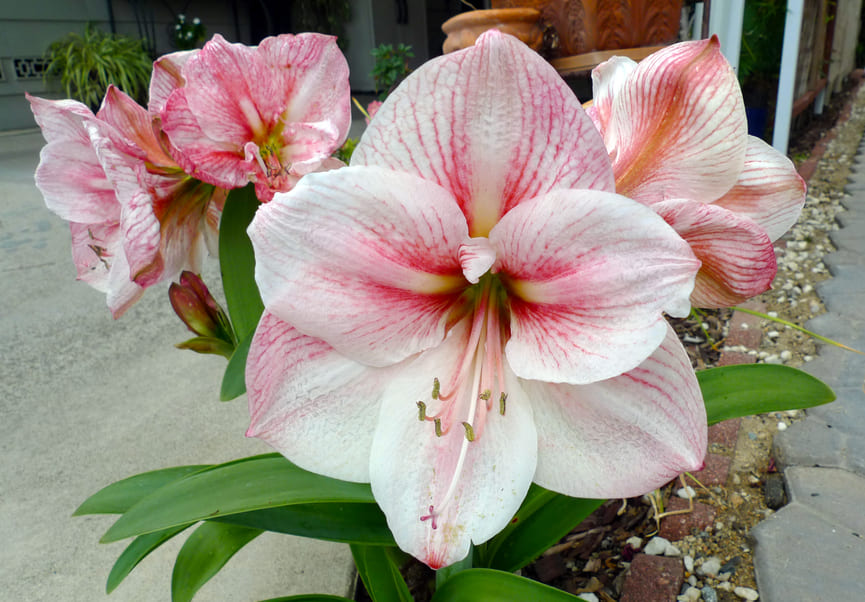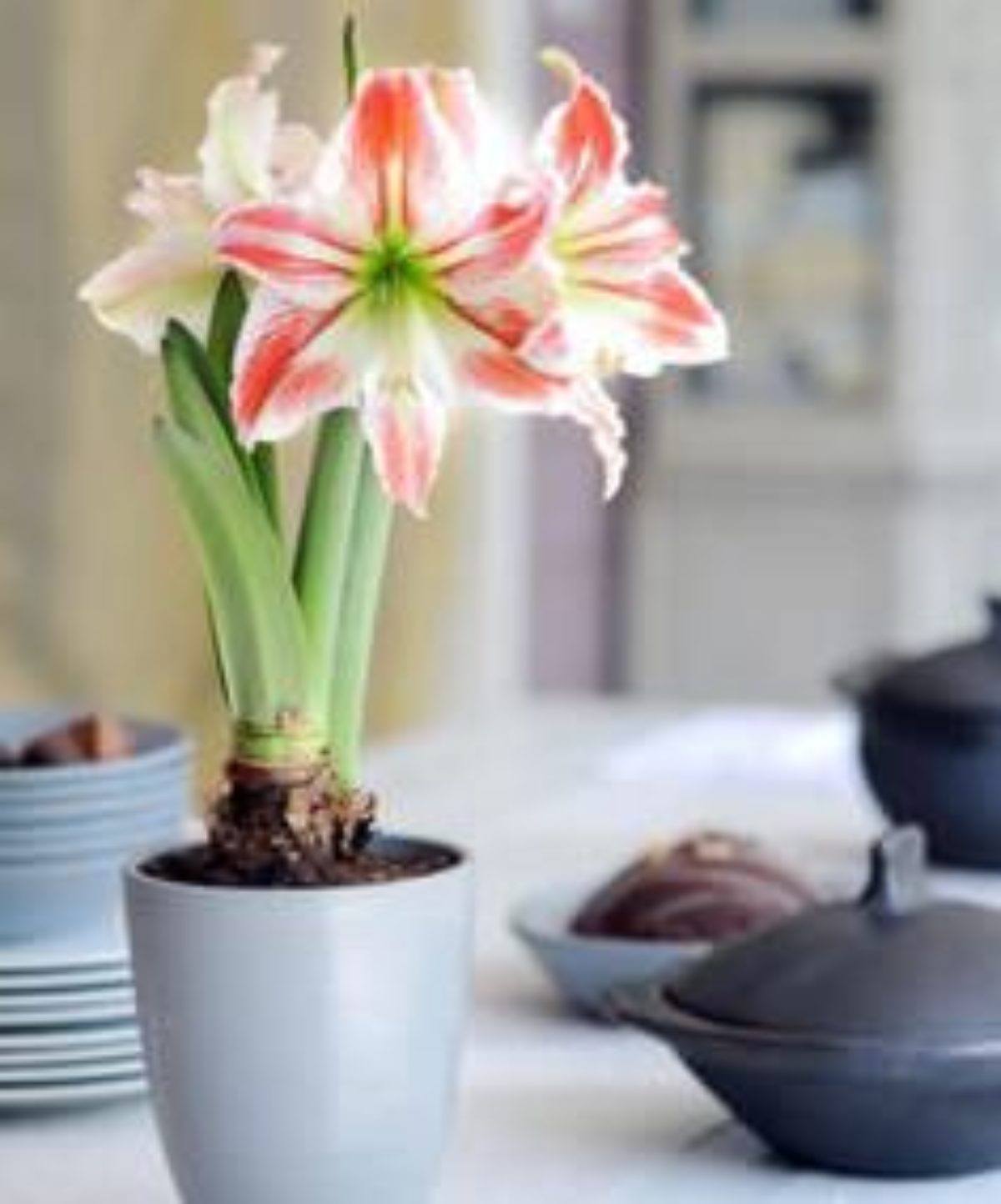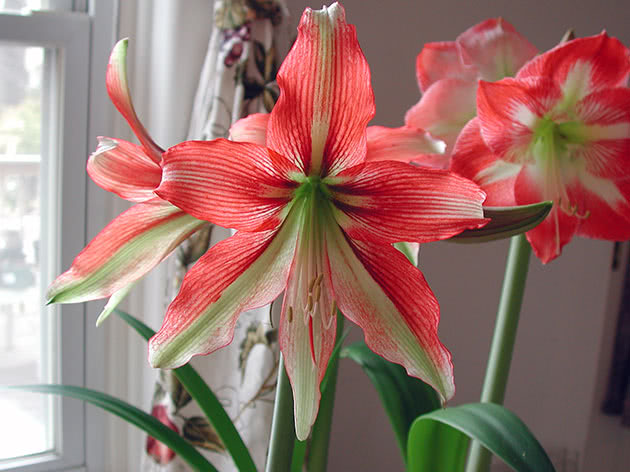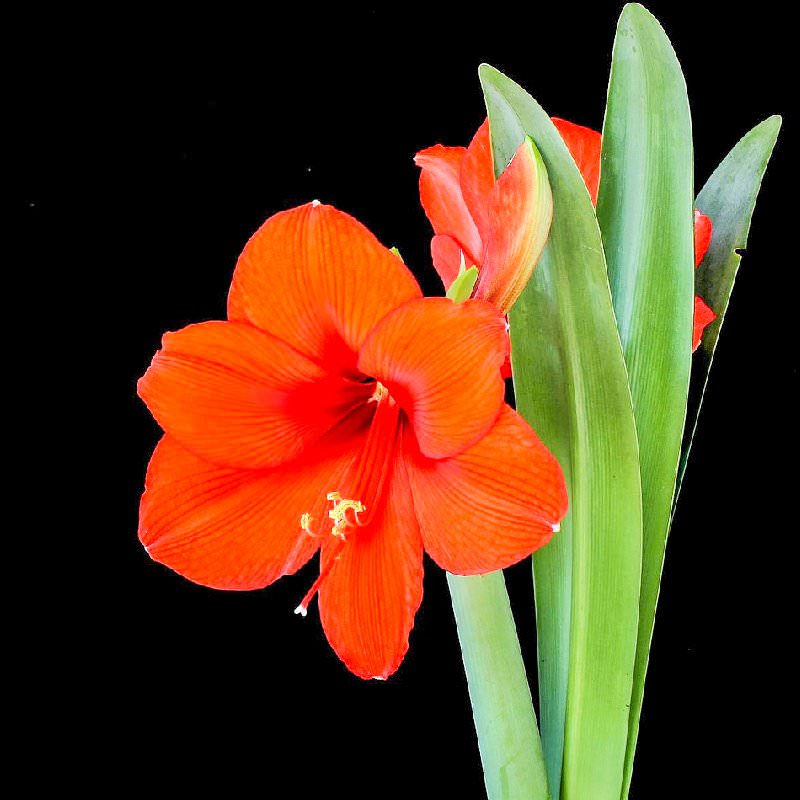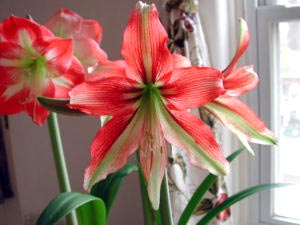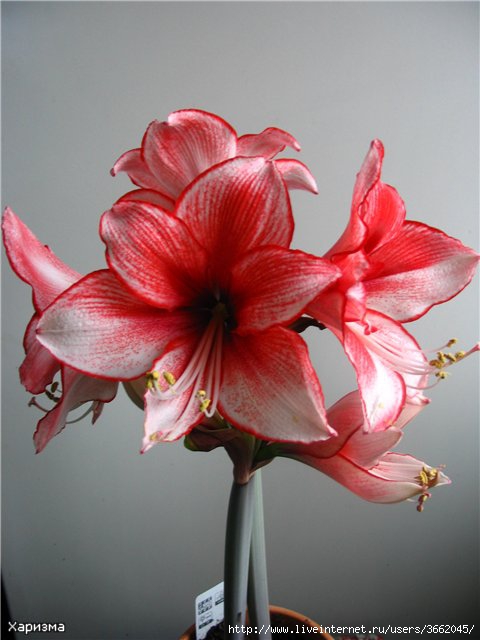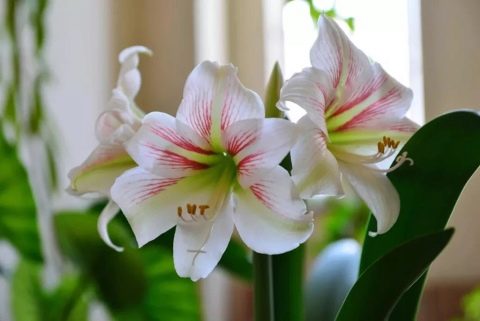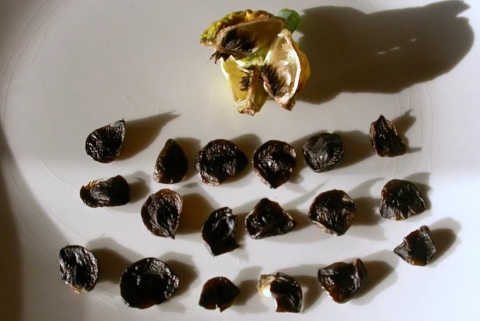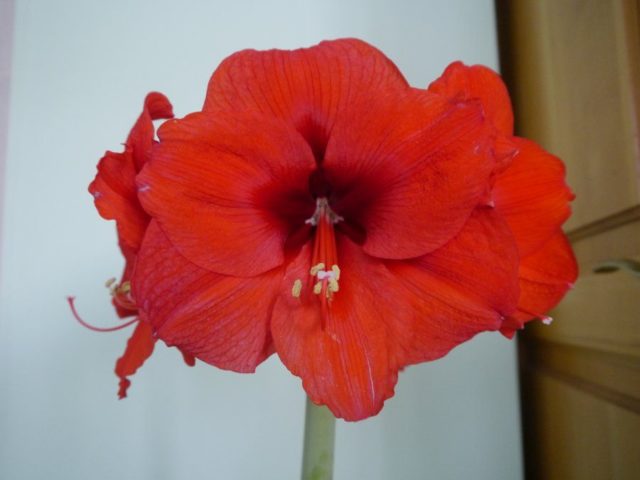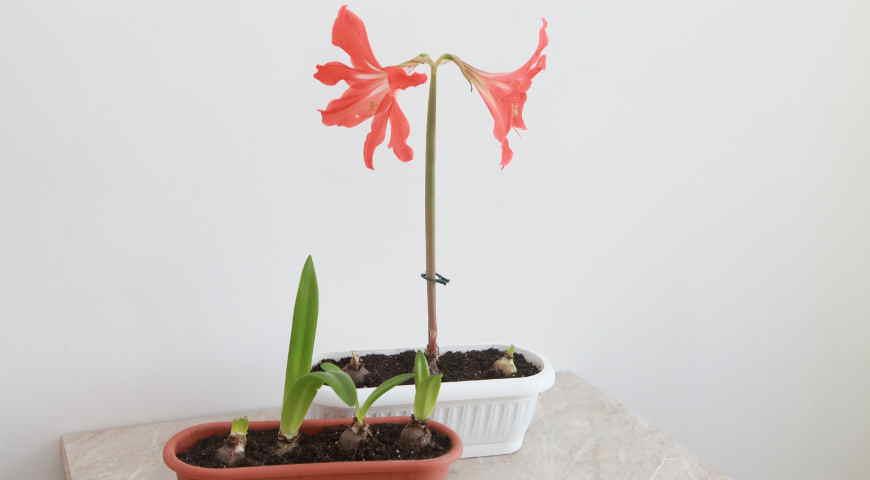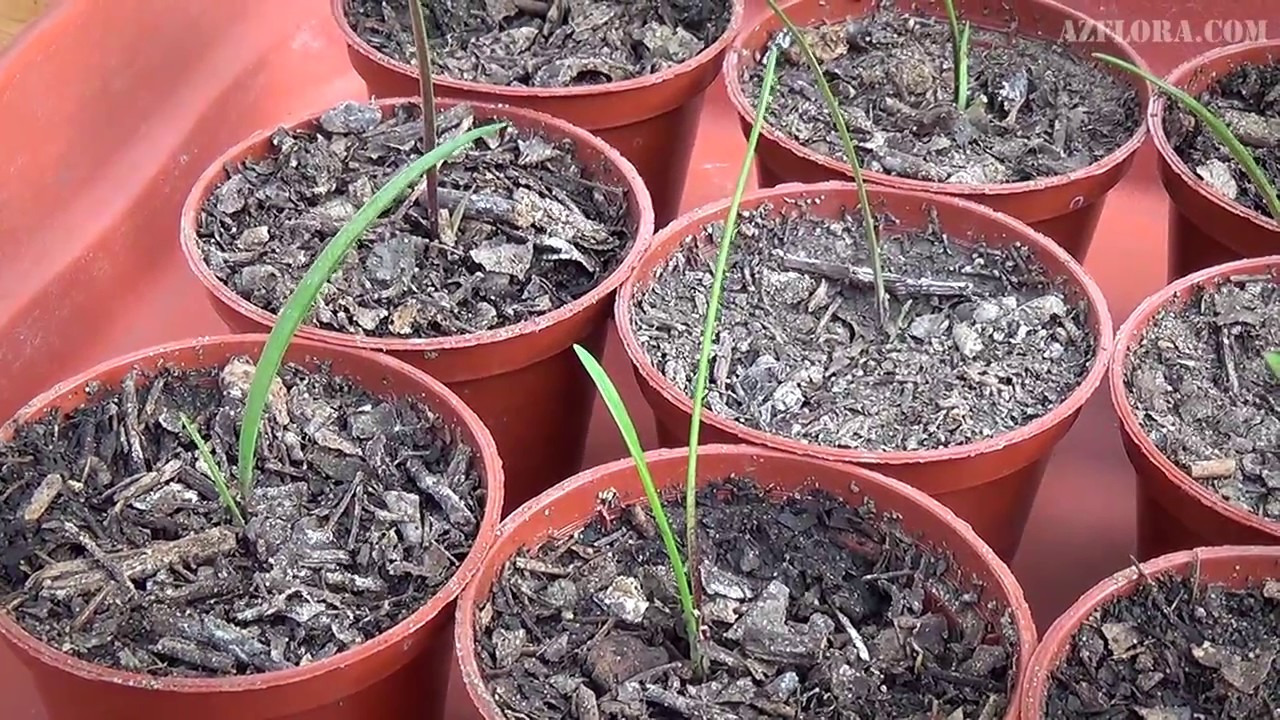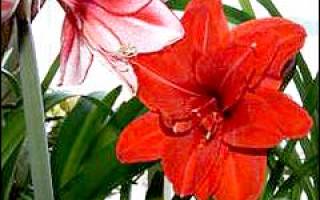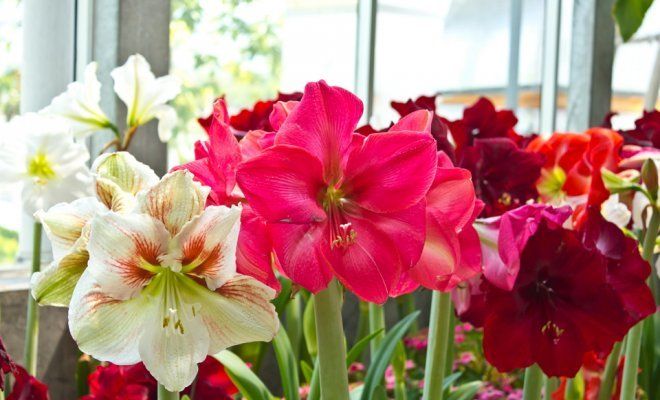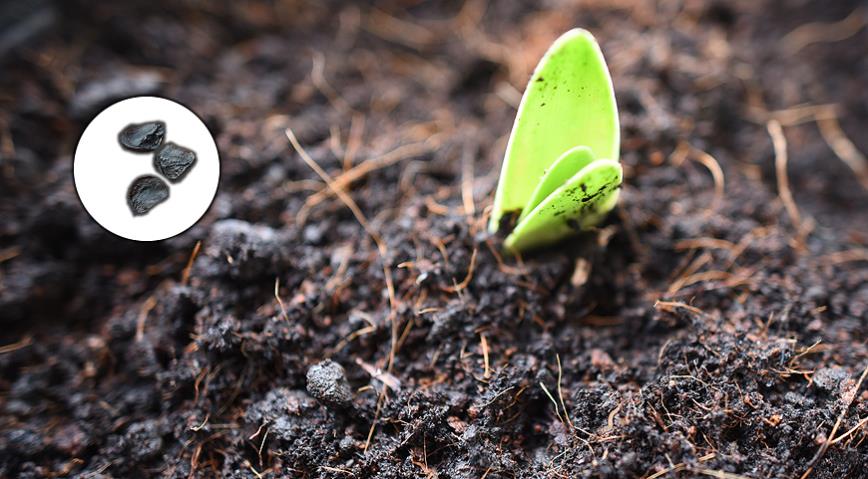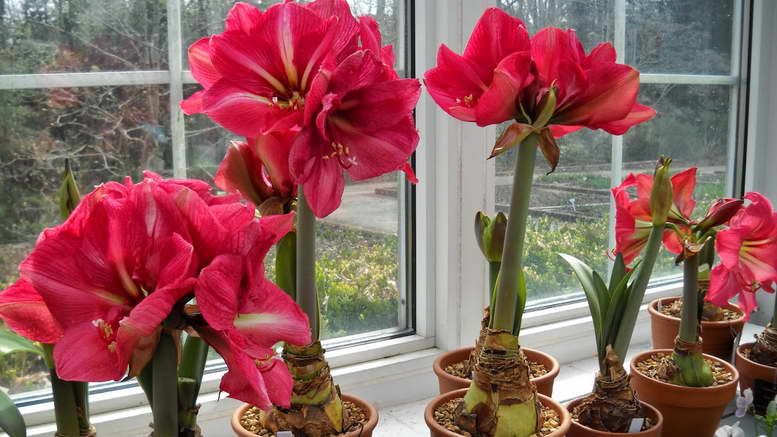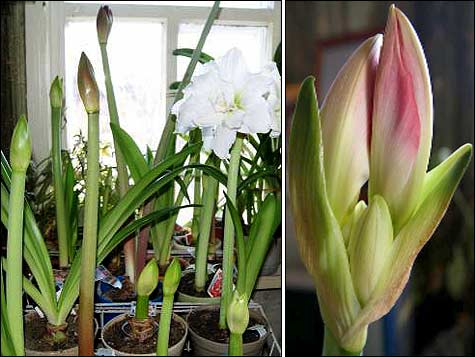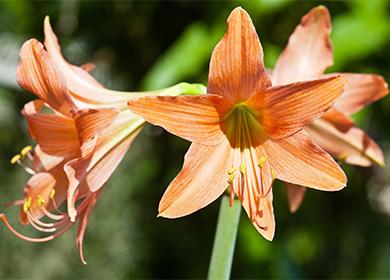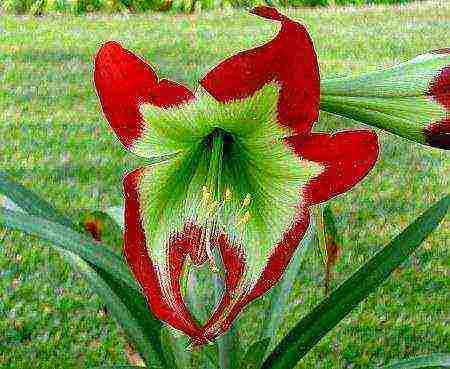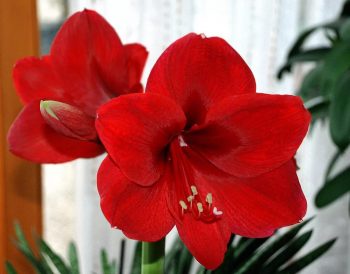Features of cultivation, pests and diseases
Hippeastrum needs an obligatory rest period and good care during growth. If you still did not wait for your pet to bloom, this may be for the following reasons:
- lack of a dormant period (the air temperature was above 18 ° С, the plant was regularly watered and / or fertilized);
- during flowering, the air temperature was low (below 17 ° C);
- during active growth, the plant stood in a poorly lit place;
- in the previous year, the plant was poorly watered and fertilized (as a result - the formation of a small bulb with a small supply of nutrients and the absence of flower buds).
An abrupt cessation of growth may indicate a pest infestation of the bulbs. Such a plant must be dug up, freed from the ground and examined the roots and bulb. If necessary, remove damaged parts of the plant, transplant into clean, non-contaminated soil.
Darkening or blackening of colors can occur from low temperatures or dampness. In this case, you need to cut off the damaged flowers, rearrange the plant in a warm and dry place and adhere to the optimal growing regime.
The browning of the tips of the leaves of the hippeastrum occurs with a deficiency of potassium or with too dry air. The plant must be fed with a full mineral fertilizer containing macro- and microelements and fertilized in accordance with the phase of plant development. If the air is too dry - if possible, take measures to humidify the air.
It is also worth considering that from too bright light, the flowers of the hippeastrum turn pale.
Biological differences between hippeastrum and amaryllis - table
| Specifications | Hippeastrum | Amaryllis |
| Dormant period | September – February. | June – September. |
| Flowering period | February March. | Autumn (at home - closer to winter). |
| Reproduction | Children are formed quite rarely. | Babies are regularly formed in the bulb. |
| Peduncle structure | Hollow. | Corpulent. |
| Number of flowers per inflorescence | 2–6. | 8–12. |
| The smell of flowers | Practically absent. | Fragrant. |
| Features of the appearance of a peduncle | After the appearance of the fourth leaf or simultaneously with them. | First, a peduncle appears, and by the end of flowering, leaves. |
| The ability to change the life cycle | It is possible to artificially send to rest at any time, as well as stimulate flowering on a given date and re-flowering. | Life cycles are not amenable to "programming". |
Irrigation scheme
Immediately after transplanting, the plant is watered. Of course, you cannot pour water on the open part of the bulb. Water sparingly until buds appear.

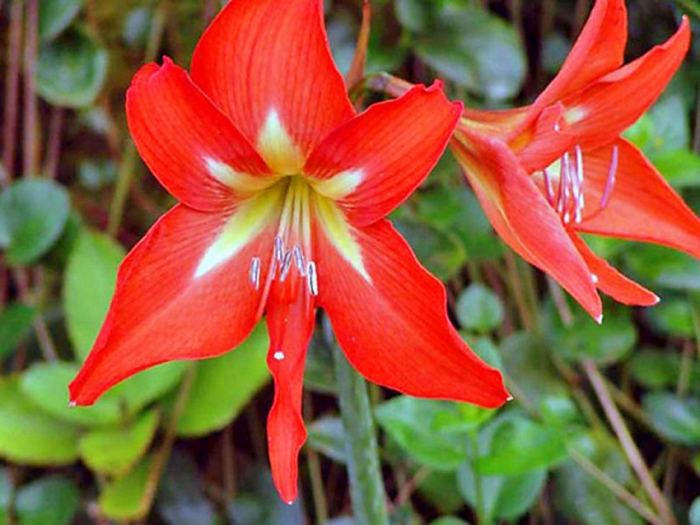
After the flowers wither until the leaves die off (this happens around the middle of autumn), watering is halved.

After the leaves die off, there is a dormant period lasting eight weeks. Some guidelines recommend stopping watering altogether during the dormant period, while others recommend watering altogether, but rarely and very sparingly. The air humidity in the room must still be sufficient.
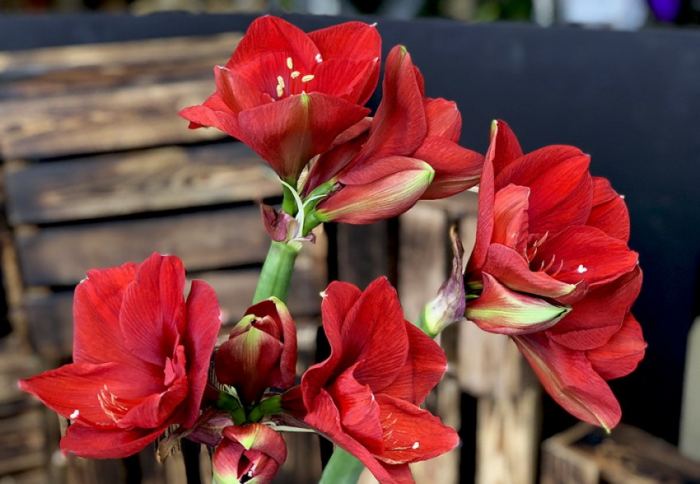
If you do not stop watering during the dormant period, then, in fact, this period, in full meaning, the plant will not have. Then the hippeastrum loses the flowering rhythm and blooms in different seasons. But under such conditions, the bulbs of the hippeastrum are depleted, and at some point the peduncles cease to form, the plant only produces leaves.

Pests and diseases of hippeastrum
If, after planting the bulb, the hippeastrum does not grow, although the conditions are good, take out the bulb and check its condition, it should be healthy and firm to the touch.If the bulb does not start growing within 1.5 months after planting, then it is clearly not viable.
In the second year, the shoot does not grow from the bulb - this happens if there was a lack of nutrition during the first year. Always keep feeding the plant until the old leaves are completely dry.
The leaves of the hippeastrum become pale green, the flowers droop - perhaps the plant has not been watered for a long time. During flowering, watering is somewhat more abundant so that the soil is moist all the time.
The plant grows well at first, then the growth of the hippeastrum suddenly slows down - the bulb may be damaged by pests. Check for larvae in the soil and treat the soil with insecticide.
The flowers darken or turn black if it is too cold and / or damp. Cut off damaged flowers and move the plant to a warmer place.
Hippeastrum flowers turn pale if there is too much sun. Shade the hippeastrum from direct sunlight.
Hippeastrum leaves become very pale and lethargic if too damp. Make large drainage holes and drainage in the pot. Allow the soil to dry almost completely before watering again.
Hippeastrum does not bloom - if a dormant period was not provided, if the plant was not fed in the previous year, if the place chosen for it is not light enough, if it is too cold.
Growing conditions
In order for a native of the tropics to please with his beauty, you need to provide him with all the conditions for growth and development.
Hippeastrum requires diffused light and an air temperature of 18-25 degrees.
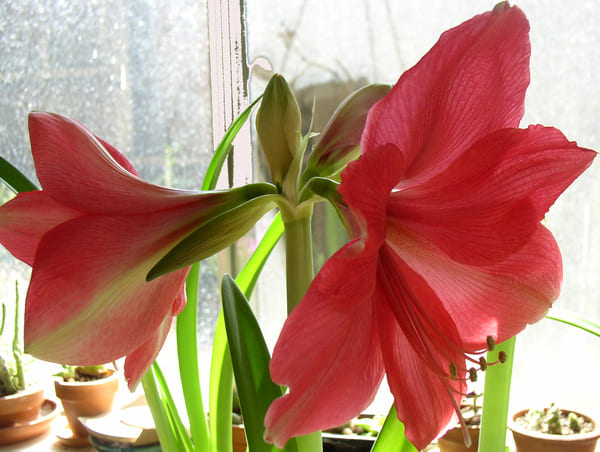
Watering
In the early growing season, a little watering is important. But after the appearance of the peduncle and before the formation of the first flowers, it is abundant. At the same time, the plant cannot be poured. It is advisable to pour water into a tray so that the flower can take as much liquid as needed.
Hippeastrum is saturated with moisture from the last days of January. It is imperative to control that the liquid penetrates into the ground and does not touch the bulb.
Air humidity
Hippeastrum is not whimsical to the parameters of humidity. That is, it is not necessary to purchase a moisturizer, it is enough to provide other conditions for the life of a flower. Optimum humidity -50%
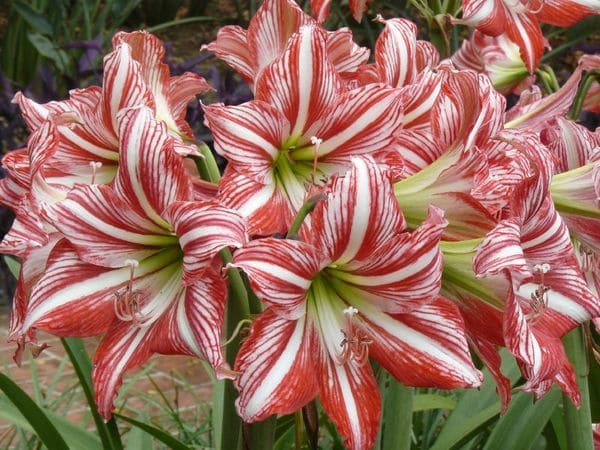
When do you need support?
Support is required when the plant has released a large arrow. The flower is supported by arched, straight or spiral columns. It can be made of bamboo, metal-plastic or just plastic.
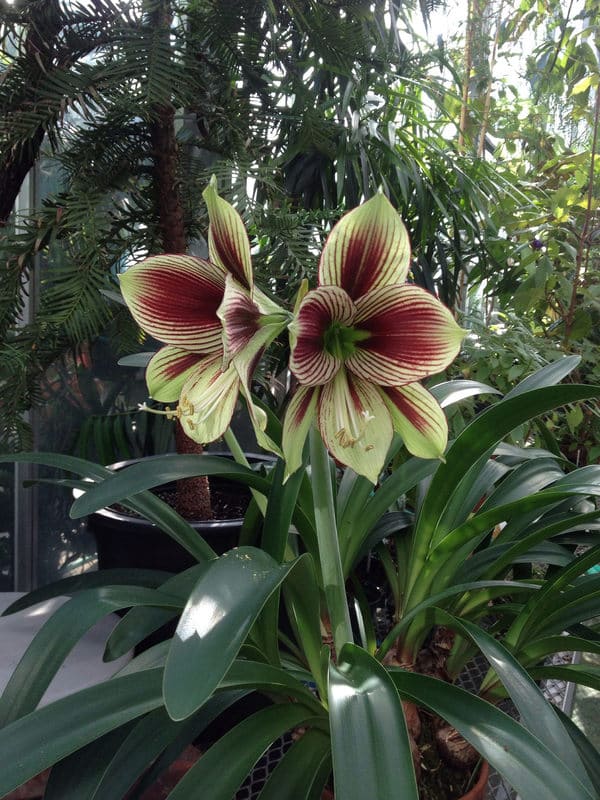
Choosing a place where to put
During the growing season, the hippeastrum needs bright lighting. It is best to place it on a window that “looks” to the southeast or southwest, the south window will do if there is shading
During the rest period, it is important to send the flower to a semi-dark place.
What does it look like in the interior?
Hippeastrum fits perfectly into the interior. Reddish-white flowers surrounded by candles can decorate the living room or bedroom space. Velvet scarlet flowers look good in a snow-white pot, and orange flowers in a flowerpot. A variety of colors of flowers will allow you to choose a plant for almost any interior.

Important! the juice of the leaves of the hippeastrum is poisonous, therefore the plant should be placed in a place inaccessible to children and animals

